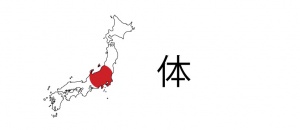Language/Japanese/Vocabulary/Parts-of-the-Body
Parts of the body in japanese
Learn to speak japanese in different parts of the body.
You will find below a list of common words and expressions that use parts of the body.
Finally watch our video to listen and repeat.
Vocabulary
Here is how to say the parts of the body in japanese:
- 体 = body
- 肢体 = limbs
- 髪 = hair
- 頭 = head
- 顔 = face
- 耳 = ear
- 首 = neck
- 目 = eye
- 鼻 = nose
- 頬= cheek
- 口= mouth
- 唇= lips
- 喉 = throat
- 歯= tooth
- 胸 = chest
- 腹 = stomach
- 膝 = knee
- 足首 = ankle
- 足 = foot / leg
- つま先 = toe
- 腕 = arm
- 肩 = shoulder
- 肘 = elbow
- 手首 = wrist
- 手 = hand
- 指 = finger
- 爪 = fingernail
- 親指 = thumb
- 背中 = back
There is some interesting points.
For some parts of the body, for example in hand and wrist we can see the kanji 手. In the words ankle and leg we can see the kanji 足. So, we can easily understand the relation between close limbs.
Precisions about the fingers
指結び = Phalanger
親指 = thumb
人差し指= index finger
中指= middle finger
薬指 = ring finger
小指 = small finger
Common idioms
Ō me ni miru / 大目に見る : to stare somebody with large eye. Means, to be caring.
In French, it exists a similar expression but with the opposite meaning : “faire les gros yeux”.
This means to be not satisfy by the behavior of other people.
Atama ga akarimasen / 頭があかりません: I can’t hold my head high. When you are grateful and you want to show it to somebody, you say this!
O naka ga suita / お腹がすいた : to get stomach empty ⬄ O naka ga ippai / お腹がいっぱい : to get stomach full.
Nodo ga kawaita / 喉が渇いた : to become thirsty
Mimi ga tako ni naru / 耳がタコになる: talking unceasingly the same thing and annoying
people.
VIDEOS
This video is cut in several parts Here is the PART 1 but you can easily navigate to the other parts.

